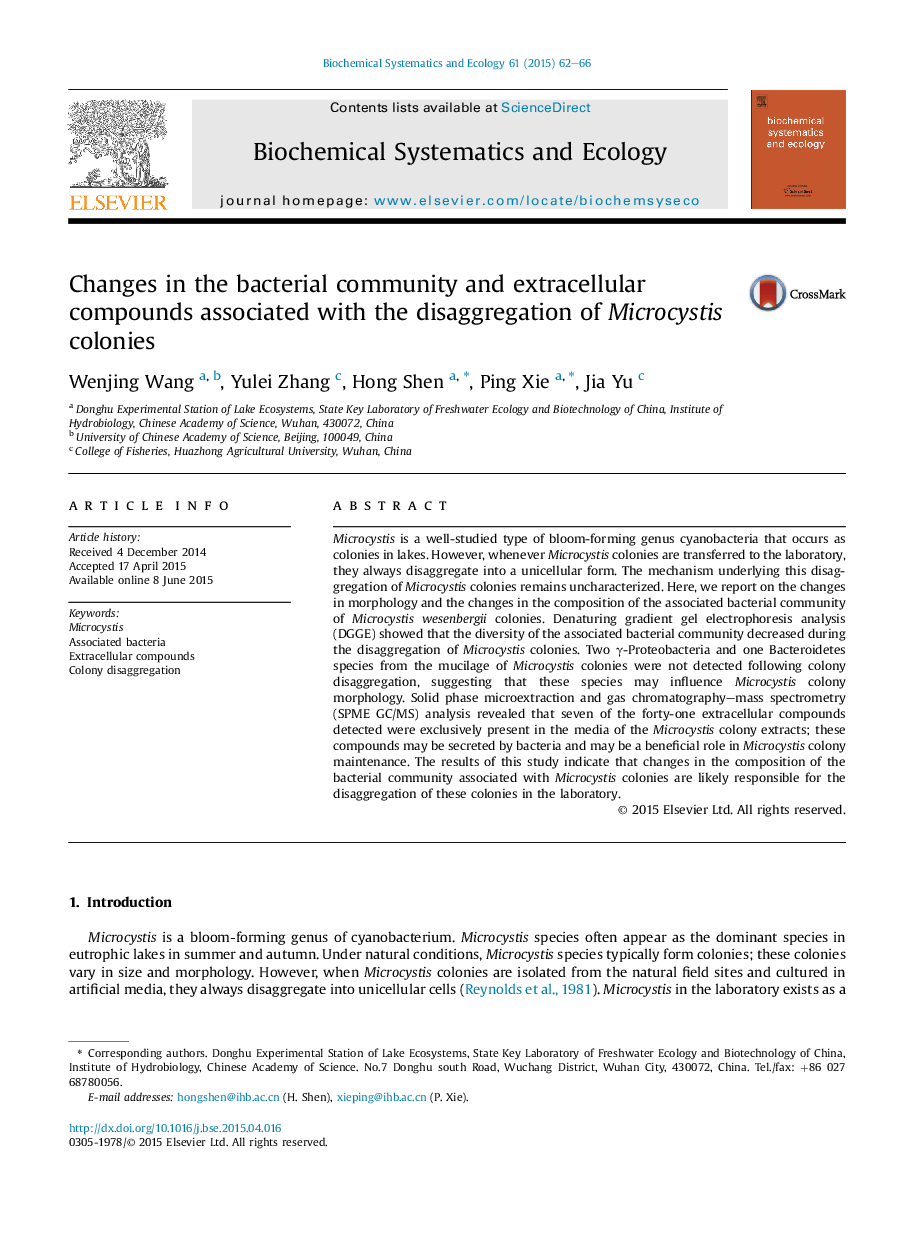| کد مقاله | کد نشریه | سال انتشار | مقاله انگلیسی | نسخه تمام متن |
|---|---|---|---|---|
| 1354184 | 1500405 | 2015 | 5 صفحه PDF | دانلود رایگان |
• Microcystis colonies disaggregate into single cells in laboratory cultures.
• Changes in the associated bacterial community occur during colony disaggregation.
• Certain extracellular compounds are only found in the colony form of Microcystis.
• Associated bacteria clearly influence changes in Microcystis morphology.
Microcystis is a well-studied type of bloom-forming genus cyanobacteria that occurs as colonies in lakes. However, whenever Microcystis colonies are transferred to the laboratory, they always disaggregate into a unicellular form. The mechanism underlying this disaggregation of Microcystis colonies remains uncharacterized. Here, we report on the changes in morphology and the changes in the composition of the associated bacterial community of Microcystis wesenbergii colonies. Denaturing gradient gel electrophoresis analysis (DGGE) showed that the diversity of the associated bacterial community decreased during the disaggregation of Microcystis colonies. Two γ-Proteobacteria and one Bacteroidetes species from the mucilage of Microcystis colonies were not detected following colony disaggregation, suggesting that these species may influence Microcystis colony morphology. Solid phase microextraction and gas chromatography–mass spectrometry (SPME GC/MS) analysis revealed that seven of the forty-one extracellular compounds detected were exclusively present in the media of the Microcystis colony extracts; these compounds may be secreted by bacteria and may be a beneficial role in Microcystis colony maintenance. The results of this study indicate that changes in the composition of the bacterial community associated with Microcystis colonies are likely responsible for the disaggregation of these colonies in the laboratory.
Figure optionsDownload as PowerPoint slide
Journal: Biochemical Systematics and Ecology - Volume 61, August 2015, Pages 62–66
